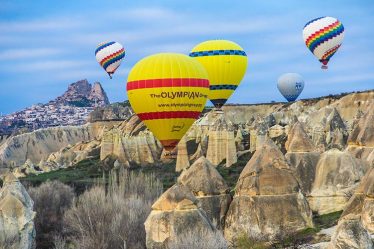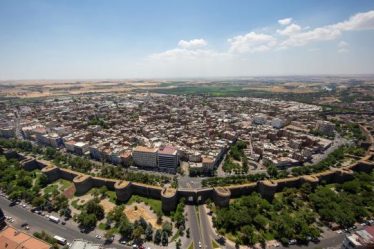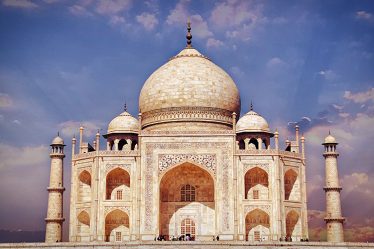Austria is the winter sports capital of, in Central Europe , surrounded by impressive mountains, together with its neighbor Switzerland. However, it is also popular with summer tourists visiting historical towns and villages, hiking in the magnificent landscape of the Alps.
The country, with its stunning snow-covered peaks and green valleys covered with meadows, with its many magnificent villages, towns and cities, promises an impressive journey from start to finish.

Austria Attractions
As the cultural and artistic capital of Europe, Vienna is the largest city and capital of Austria. Welcoming many visitors from different parts of the world with festivals, concerts, theater, opera and ballet performances held throughout the year, Vienna is also the country’s top tourist destination.
Salzburg, the city where Mozart was born and known as a magical city with its natural beauties, Graz, one of the best preserved old cities of Europe, Austria, especially the Danube Valley, which stretches along the Danube River and where canal tours are made, is built on a rich historical, cultural and natural heritage.
ⓘ Content List
Austria Attractions
- Vienna
- Salzburg
- Salzkammergut
- Zell am See
- Innsbruck
- Graz
- Danube Valley
- Klagenfurt
- Eisenstadt
- Bregenz
- Linz
- Wachau
- Bad Gastein
1. Vienna

Considered one of the most interesting and delightful cities in Europe, Vienna is timeless, romantic and fascinating. Founded by the Romans, Vienna was the capital of the Habsburg Empire. In addition to the best places to visit, the best museums, the best churches and the best shopping malls in the charming imperial city of Vienna, you can explore the city and its surroundings on a day tour.
Since there are many palaces, museums and galleries in the city, it is very important to arrange the time wisely. You can start your visit by concentrating on the Ringstrasse, an important street that surrounds Vienna’s old town, and the historic center, built in the middle of the 19th century.
Many of the city’s leading attractions are scattered along the side of this 3.5km road, which replaces the fortifications and battlements that once protected the center of Vienna from the Ottoman Turks and other invaders.
Besides admiring the city’s visual history and architectural treasures, there is much to see and do in Vienna. The Hofburg is a stunning castle-palace with parts dating from the 13th century. The beautiful Stephansplatz surrounds the remarkable Stephansdom (St. Stephen’s Cathedral) towering above the city. Most cathedral visitors climb up to the south tower for incredible views of Vienna.
No trip to Vienna is complete without a visit to Vienna’s famous Opera House. If you’re interested in opera, consider taking a guided tour. Belvedere Palace, now an art museum, consists of two striking structures separated by beautiful gardens. Schönbrunn Palace (Schloss Schönbrunn), used as a summer house by the Hapsburgs, is one of the most beautiful palaces in Europe, extremely elegant with its gardens.
2. Salzburg

Salzburg , the birthplace of Mozart, is a city that is a constant reminder that Mozart music is an essential part of the ambiance of this fascinating city. If you have a special interest in music and Mozart, which is an integral part of the city’s essence, you may want to see his statue in Mozart Square (Mozartplatz), visit his birthplace in the old city center or visit the official Mozart Residence along the Salzbach River.
A marvelous area of Baroque architecture, Salzburg’s old town contains many of the major sights in this historic city. The vast expanses of the old town make exploring on foot only even more enjoyable. During your tour of the Old Town, you can explore Cathedral Square for its beautiful and historic cathedral (Salzburger Dom).
Across the street, you can continue to explore the impressive Residenz Palace, the former residence of the Prince-Archbishop of Salzburg, and its historical treasure trove of art, furniture and other historical artifacts from past centuries. Visiting the Hohensalzburg Castle (Festung) is a must. Besides the beautiful view of the city in the castle, you can find furniture and weapons quite interesting.
📍 Places to
Visit in Salzburg 📍 How to Get to Salzburg
Take some time to see the Mirabel Palace and its beautiful gardens, located on the right bank of the Salzach River. If you found Hohensalzburg Castle interesting, Castle Werfen, one of the sisters of the castle, about 50 km south of the city, may interest you. One of the most scenic of Austria’s hilltop castles.
3. Salzkammergut

Salzkammergut, as a very beautiful holiday region, starts from Salzburg and extends to the lakes region in the east. Crystal clear clean lakes, green hills, magnificent mountains, St. Romantic towns such as Wolfgang and Hallstatt are among the features that make this region extraordinary.
If you’re looking for an unforgettable example of an idyllic life in the Austrian countryside and time permits, St. You can visit Gilgen. The village is located east of Salzburg on the shore of Lake Wolfgangsee , a pleasant place for a day trip.
If you’re traveling between Salzburg and Graz , make sure to spend some time in the incredibly beautiful Village of Hallstatt on the shores of the Hallstätter See. 1 hour from Salzburg, St. You will be amazed by Hallstatt, which is 40 minutes away from Gilgen.
4. Zell am See

Zell am See is another tourist route in Salzburg, famous for its mountains and lakes. Zell am See, once under the control of French soldiers in the 19th century, hosted many international ski tournaments.
One of the most important places to see is the 16th century work of St. Hippolyte Romanesque Church. Zell am See is also a very convenient point to start the Grossglockner Alpine route, which is famous for its panoramic view.
4. Innsbruck

In Innsbruck, where world-famous landscapes stand side by side with impressive architectural structures, past and future meet uninterruptedly in the heart of the Alps. Selected to host the 1964 and 1976 Winter Olympics, Innsbruck is one of Europe’s ski capitals.
Besides its natural assets, Innsbruck is surrounded by major cultural attractions. II in Innsbruck. The city, which suffered 22 bomb attacks between 1943 and 1945 during World War II and was heavily damaged, is now an enormous tourism region.
4. Graz

Declared a World Heritage Site by UNESCO in 1999, the Historic City Center of Graz is considered one of the best preserved old towns in Europe. Be sure to see Chateau Eggenberg, the magnificent clock tower at Glockenspieplatz, the Italian-inspired Landhaus, and the cathedral.
Graz, the capital of Styria, whose roots date back to Roman times, is located on both sides of the Peloponnese. Discover culinary delights in countless bars, cafes, wineries, hotels and restaurants on a fast gastronomic tour to the local food and wine regions of Styria, in the city famous for its stunning buildings and architecture.
5. Danube Valley

The Danube Valley is one of Austria’s top attractions and a unifying theme for the country. The best way to explore the Danube Valley is to take one of the excursion boats and tour along the valley. During the long tour, you can spend a wonderful day exploring lush green towns, historical castles and delightful cities.
The Danube Cycle Trail, Europe’s most popular classical cycle path, is unique with its extraordinary scenery, fascinating places to visit along the way and a wide cultural diversity. Parts of the route lead to Wachau and Donau-Auen National Park, both of which are UNESCO World Heritage Sites.
6. Klagenfurt

Klagenfurt, the regional capital of Carinthia, is an 800-year-old city adorned with magnificent mansions, historic houses, museums and galleries in its old city centre. The city stretches along Lake Wörthersee. Klagenfurt is surrounded by more than 20 castles and numerous ruins.
Klagenfurt, one of the cutest old towns in Austria, is a city that has been awarded the prestigious Europa Nostra Diploma three times for its beautifully restored arched Renaissance courtyards with modern boutiques, trendy bars and concept cafes.
7. Eisenstadt

Burgenland’s capital, Eisenstadt, is a quaint baroque town where Joseph Haydn worked for 30 years while composing some of his most famous works. If you are a Haydn fan, do not forget to visit Esterhazy Palace and Haydn Church (Bergkirche).
In Eisenstadt you can also see the Gloriette on Mount Calvary, with its 13th-century Martinsdom (St. Martin’s Cathedral) and English landscape gardens. In the historic old town, shops, cafes and restaurants line the pedestrian-only main street. st. The regions of Georgen and Kleinhöflein are famous for their quaint Heurigen wineries, ideal for spending warm summer nights.
8. Bregenz

Located in the westernmost state of Austria, Vorarlberg, Bregenz is a 2,000-year-old city on the shores of the delightful Lake Bodensee. Located on Lake Constance, the third largest lake in Central Europe, the capital of Vorarlberg is a lively city where many cultural and artistic events are held throughout the year.
The must-see historical building in the city on the eastern shore of Lake Constance is the baroque St. Martin’s Tower (Martinsturm). The region also has a variety of outdoor sports alternatives, including cycling, mountain biking, hiking, trekking, tennis, paragliding and all kinds of water sports.
9. Linz

Located on the banks of the Danube, Linz has a historic city centre. Linz’s old town is the ideal setting for wandering around the charming cobbled streets and architectural structures of the past centuries. In particular, be sure to see the Altes Rathaus (Old Town Hall) from the early 16th century and the Linz Castle from the 8th century.
The spacious and wide square of the city is the largest square in Central Europe. The railway, with the steepest route on the continent, takes you without haste to Pöstlingberg for panoramic views of the city. Get ready to be fascinated by the magnificent Alps scenery at the clear points of view. One of Austria’s most popular shopping areas is also in the heart of Linz city centre.
10. Wachau

Taking its name from the Wachau River, which connects the region with its rushing, narrow streams, Wachau is very famous as one of Austria’s leading wine-making regions. Wachau is fascinating with its historical city center and natural beauties, which are on the UNESCO World Heritage List.
11. Bad Gastein

A settlement that thrived for thousands of years thanks to gold mining, Bad Gastein actually gained a reputation as an important spa town in the late 19th century due to its thermal springs. Kings, queens, chancellors and tsars came here for the healing waters of Bad Gastein.
To please the royal guests, the town was built in the flamboyant Belle Époque style we can still see today. Do not leave Bad Gastein without enjoying the baths and spas where nobles were treated hundreds of years ago. If you’re thinking of coming to town during the winter months, keep in mind that you can do skiing and many other winter sports.
Austria has many settlements where you can witness unique landscapes, from green mountain meadows to white peaks, depending on the season. From canyons to steep cliffs, from vineyards to medieval architecture, Austria has postcard-like addresses that appeal to everyone.


